Volkswagen Taos: Transporting
- Stowing luggage and cargo
- Luggage compartment cover
- Luggage compartment floor
- Luggage compartment features
- Roof rack
Stowing luggage and cargo
Stowing luggage securely in the vehicle
- Distribute luggage as evenly as possible in the vehicle. Do not cover any vent openings.
- Always stow luggage and heavy objects in the luggage compartment and
place them as far forward in the compartment
as possible ⇒
 .
. - Adhere to the Gross Axle Weight Rating and Gross Vehicle Weight Rating ⇒ Technical data.
- Secure objects in the luggage compartment using suitable securing cords, fixation belts or tensioning straps on the tiedowns.
- Also store small objects securely.
- If necessary, fold the rear seat backrest down and lock it securely.
- If necessary, adjust the headlight range. Vehicles with dynamic headlight range control will adjust automatically.
- Adjust the tire pressure based on the load. Follow the tire pressure label ⇒ Checking the tire pressure.
WARNING
Objects or animals that are not secured or are secured incorrectly can cause serious or fatal injuries in the event of sudden driving and braking maneuvers or a collision. This is especially true if the airbags deploy and strike objects, causing them to fly through the vehicle interior.
- Store all objects securely in the vehicle. Follow the legal regulations whilst doing so.
- Stow objects in the vehicle interior in such a way that they will not enter the airbag deployment zone while you are driving.
- Secure animals in the vehicle restraint systems that are appropriate for their weight and size.
- Always keep the storage compartments closed while driving.
- Do not leave hard, heavy, or sharp objects loose in the open storage compartments in the vehicle, on the surface behind the rear seat backrest, or on the instrument panel.
- Remove hard, heavy, or sharp objects from clothing and bags in the vehicle interior and store them securely.
WARNING
If objects stowed in the vehicle cause people to sit in the wrong position, serious or fatal injuries may occur in the event of sudden driving and braking maneuvers or accidents.
- Never stow objects on a seat if a person is going to use it.
WARNING
When transporting heavy objects, the vehicle's handling performance may change because of the altered center of gravity and the braking distance may increase. Heavy loads that have not been stowed or secured properly may change the vehicle handling, e.g. if the load slides around. This can result in a loss of vehicle control and lead to serious or fatal injuries.
- Never overload the vehicle. Both the load and the distribution of the load in the vehicle affect driving behavior and braking efficiency.
- Always distribute the load evenly and as low down in the vehicle as possible.
- Secure heavy objects in the luggage compartment as far in front of the rear axle as possible.
- Secure any loose objects to prevent them from sliding around.
- Always adapt your speed and driving style to the visibility, weather, road and traffic conditions.
- Accelerate with extra care and caution.
- Avoid sudden braking or driving maneuvers.
- Brake earlier than usual if the vehicle has a heavy load.
NOTICE
Abrasive objects on the rear windows can cause damage, e.g. to the heating wires of the rear window defroster.
- Do not load the luggage compartment to a height where objects rest against the rear window.
NOTICE
Carrying systems fixed to the rear spoiler may damage the vehicle.
- Do not attach a luggage rack or any other kind of carrying system, e.g. bicycle rack, to the vehicle's rear spoiler.
Luggage compartment cover
Luggage compartment cover
When opening and closing the trunk lid, the luggage compartment cover is raised or lowered on the attached retaining straps.
The luggage compartment cover is not suitable for use as storage for objects,
even lightweight items of clothing ⇒
 .
.
WARNING
Objects or animals on the luggage compartment cover can damage the luggage compartment cover and cause serious injury or death in the event of sudden driving and braking maneuvers or an accident.
- Never transport objects on the luggage compartment cover.
- Never allow animals to ride on the luggage compartment cover.
NOTICE
Incorrect handling of the luggage compartment cover can cause damage.
- Do not load the luggage compartment so high that the luggage compartment cover presses on the load when the trunk lid is closed.
- Never close the trunk lid while the luggage compartment floor is open or locked.
Installing and removing the luggage compartment cover
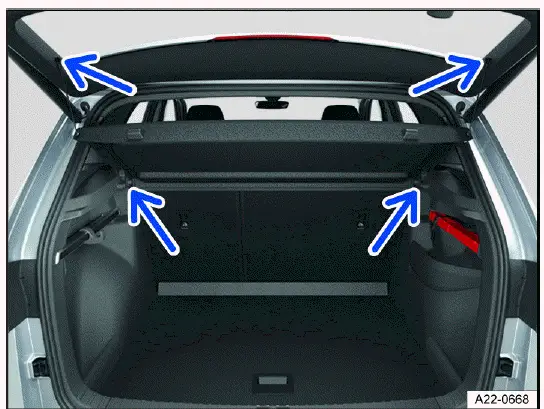
Fig. 136 In the luggage compartment: installing and removing the luggage
compartment cover (general example).
Removing the luggage compartment cover
1. Unhook the top retaining straps from the trunk lid fig. 136 (upper arrows).
2. Push the luggage compartment cover out of the side holders from below fig. 136 (lower arrows).
Installing the luggage compartment cover
1. Press the luggage compartment cover into the side holders in the luggage compartment fig. 136 (lower arrows).
2. Hook the retaining straps onto the trunk lid fig. 136 (upper arrows).
Storing the luggage compartment cover
Depending on the equipment, the removed luggage compartment cover can be stored below the variable luggage compartment floor. To do so, the luggage compartment cover must be turned over.
Luggage compartment floor
Opening and closing the luggage compartment floor
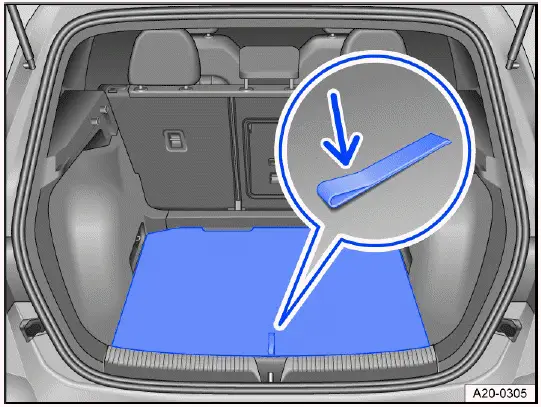
Fig. 137 In the luggage compartment: opening the luggage compartment floor.
Opening the luggage compartment floor
1. Grasp the opening or tab in the luggage compartment floor fig. 137 (arrow) and lift the luggage compartment floor.
Closing the luggage compartment floor
1. Carefully lay down the luggage compartment floor in the original position.
NOTICE
Improper use may damage the luggage compartment floor or the luggage compartment trim.
- When closing the luggage compartment floor, always carefully guide it downward, and do not drop it.
- Always distribute loads as evenly as possible across the entire luggage compartment floor to avoid concentrating the load in a single place.
Luggage compartment features
Tie-downs
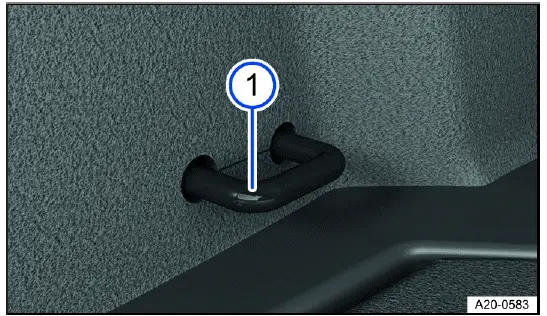
Fig. 138 In the luggage compartment: Tie-down (general example).
- Tie-down.
Tie-downs are located in the luggage compartment to secure loose objects and luggage with the help of lines, fixation belts or securing straps fig. 138.
WARNING
Unsuitable or damaged tie-down straps or tensioning straps could break during braking maneuvers or an accident. This could result in objects being thrown through the vehicle interior and causing serious or fatal injuries.
- Use only suitable and undamaged tie-downs, fixing and tensioning straps.
- Secure cords, fixation belts and tensioning straps diagonally and tightly across the items placed on the luggage compartment floor, and fasten the cords, fixation belts and tensioning straps securely to the tie-downs.
- Make sure that the upper edge of the load is above the tie-downs, especially on flat objects.
- Follow the signs about storing cargo in the luggage compartment, depending on the vehicle equipment.
- Never secure a child restraint to the tie-downs.
WARNING
Elastic tensioning straps must be stretched for securing to the tie-downs and are therefore under tension. If elastic tensioning straps slip off and spring back toward your body, the hooks attached to them may cause serious injuries.
- Protect your eyes and face when securing and releasing the straps.
- Always secure elastic tensioning straps to the tie-downs in the front part of the luggage compartment first. Then pull them to the loading edge. Secure the elastic tensioning straps to the tie-downs so that they will spring away from your body if they come off.
 Suitable straps and cargo
securing systems are available from an authorized Volkswagen dealer or
authorized
Volkswagen Service Facility. Volkswagen recommends contacting an authorized
Volkswagen dealer or authorized
Volkswagen Service Facility.
Suitable straps and cargo
securing systems are available from an authorized Volkswagen dealer or
authorized
Volkswagen Service Facility. Volkswagen recommends contacting an authorized
Volkswagen dealer or authorized
Volkswagen Service Facility.
Shopping bag hooks
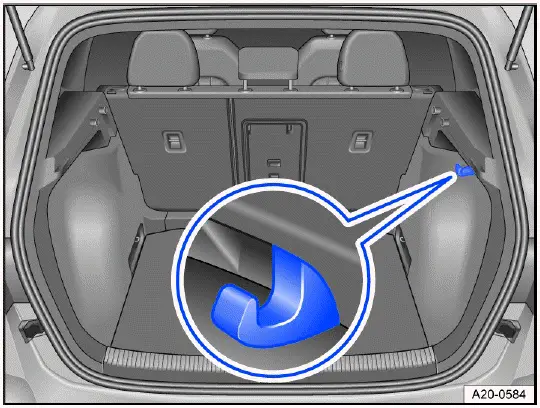
Fig. 139 Shopping bag hooks on the left and right of the luggage compartment.
You may have shopping bag hooks in your luggage compartment for hanging light shopping bags.
WARNING
Luggage or other items tied to the shopping-bag hooks may tear off and be thrown into the vehicle interior during a braking maneuver or accident. This may cause you to lose control of the vehicle and result in serious or fatal injuries.
- Never use the shopping bag hooks to tie down pieces of luggage or objects.
- Only hang lightweight items, up to a maximum of 2.5 kg (approximately 5.5 lbs), from the shopping bag hooks in the vehicle.
Load-through hatch
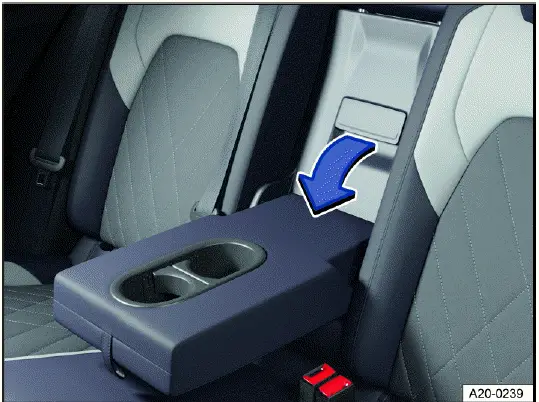
Fig. 140 In the rear seat backrest: luggage compartment pass-through (general
example).
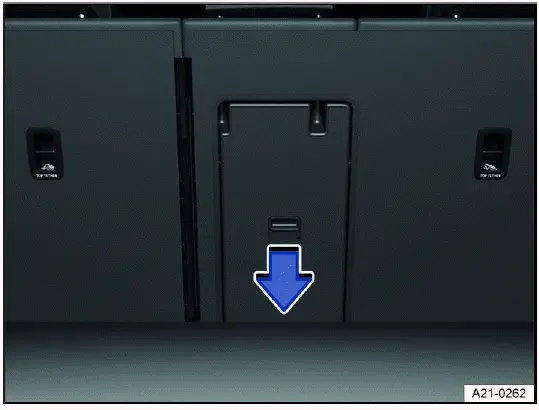
Fig. 141 In the luggage compartment: rear of the luggage compartment
pass-through (general example).
Depending on the vehicle equipment, there may be a load-through hatch behind the center armrest in the rear seat backrest for transporting long objects, such as skis, inside the vehicle.
Opening the pass-through from the vehicle interior
1. Fold the center armrest forward ⇒ Center armrest.
2. Pull the release lever in the direction of the arrow fig. 140 and fold the
luggage compartment pass-through cover all the
way forward ⇒
 .
.
3. Open the trunk lid.
Opening the pass-through from the luggage compartment
1. Press the release lever down in the direction of the arrow fig. 141 and fold the cover forward.
2. Insert long objects from the luggage compartment side and slide them forward through the load-through hatch.
3. Secure objects with a seat belt if necessary.
4. Close the trunk lid.
Closing the load-through hatch
1. Fold the flap for load-through hatch backward until it clicks into place.
There may be a red mark on the luggage compartment side. This should not be
visible ⇒
 .
.
2. Close the trunk lid.
3. If necessary, fold the center armrest backward.
WARNING
Folding and unfolding the load-through hatch in an uncontrolled or careless manner may result in serious injury or death.
- Never fold the luggage compartment pass-through forward or back while driving.
- When folding up the pass-through, make sure that the safety belt does not become trapped or damaged.
- Keep hands, fingers, feet and other body parts away from the pivot range of the pass-through when folding it forward or back.
- Always check that the red mark on the catch indicator is not visible
when the pass-through is in the upright position.
A red marking indicates that the luggage compartment pass-through is not locked into place.
- If the luggage compartment pass-through is folded down or is not securely engaged, no passengers, especially children, are to be transported on this seat.
Trailer towing technically not possible
Trailer towing information
The vehicle is not designed for towing a trailer. No trailer hitch may be retrofitted.
WARNING
Mounting a trailer hitch on the vehicle can result in damage to the vehicle, accidents and serious or fatal injuries when operating the vehicle.
- Never mount a trailer hitch on the vehicle.
Roof rack
Introduction
Depending on the model, the vehicle may be designed to have a roof rack installed.
Bulky objects can be transported on the vehicle roof using the roof rack.
If you are not sure if your vehicle is designed to have a roof rack installed, check with an authorized Volkswagen dealer or authorized Volkswagen Service Facility. Volkswagen recommends contacting an authorized Volkswagen dealer or authorized Volkswagen Service Facility.
Only use roof racks that are approved by Volkswagen for use with your vehicle.
Do not use or retrofit a roof rack if this is not approved for your vehicle.
WARNING
When transporting large, heavy, long, or flat loads on the roof rack, the vehicle's driving characteristics and aerodynamics change because of the different center of gravity and increased wind resistance. This may cause accidents and serious or fatal injuries.
- Always secure cargo correctly with suitable and undamaged cords, fixation belts or tensioning straps.
- Avoid abrupt and sudden driving and braking maneuvers.
- Always adapt your speed and driving style to the visibility, weather, road and traffic conditions.
WARNING
If the use of a roof rack is not approved for your vehicle or a roof rack that is incompatible with the vehicle is fitted, it may detach and fall from the roof of the vehicle while you are driving. This may cause accidents and serious or fatal injuries.
- Only use roof racks that are approved by Volkswagen for the vehicle.
- Do not fit roof racks if they are not approved for your vehicle.
NOTICE
Installing any type of roof rack onto a vehicle that is not approved for use of a roof rack can cause serious damage.
- Do not fit roof racks if they are not approved for your vehicle.
 Driving with a roof rack
fitted increases the air resistance of the vehicle and thus also the fuel
consumption. This reduces
the potential range of the vehicle. This applies to all roof racks and any
objects transported on them, such as bicycles and
skis.
Driving with a roof rack
fitted increases the air resistance of the vehicle and thus also the fuel
consumption. This reduces
the potential range of the vehicle. This applies to all roof racks and any
objects transported on them, such as bicycles and
skis.
Mounting a roof rack
Please read the introductory information and heed the Warnings and
Notice ⇒
 and
and
 Introduction.
Introduction.
For safety reasons, special roof racks are needed to transport luggage, bicycles, surfboards, skis and boats safely. The roof racks for installation on the roof rail in particular are referred to as the roof rack bars, and are used as a base supports for direct installation on the vehicle roof.
Only use roof racks that are provided for the vehicle model, model year and vehicle equipment by the corresponding manufacturer.
Volkswagen recommends the use of Volkswagen original parts or Volkswagen original accessories, which you can acquire from an authorized Volkswagen dealer or authorized Volkswagen Service Facility.
Mounting the Roof Rack Bars on the Roof Rail
Mount the roof rack bars in accordance with the supplied installation instructions.
The respective base can be attached after successfully installing the roof rack
bars ⇒
 .
.
Remove the roof rack in the following scenarios
- If the roof rack is no longer needed.
- Before driving through an automatic car wash
- If the height of the vehicle exceeds the maximum height limit, for example in a garage
NOTICE
The height of the vehicle changes when a roof rack is installed and when there is cargo secured on it. The vehicle may be badly damaged if you drive into entrances with low heights, e.g. underpasses and garages.
- Compare the height of the vehicle with the clearance height.
NOTICE
If parts on the roof of your particular vehicle (depending on the vehicle equipment), e.g. the roof antenna, and the trunk lid's range of movement are impaired by the roof rack and the luggage, the vehicle may be damaged.
- Ensure that the roof rack is positioned correctly on the roof and that it will not affect any components of the vehicle.
WARNING
Securing the roof rack and base incorrectly or using them incorrectly may cause the luggage or the entire assembly to come loose from the vehicle roof. This can result in accidents and serious or fatal injuries.
- Always mount the roof rack and base correctly in accordance with the manufacturer's instructions.
- Secure the roof rack only at the locations intended for this.
- Always mount special rack assemblies for bicycles, skis, surfboards, etc. correctly and in accordance with the manufacturer's installation instructions.
- Only use the roof rack and base if they are undamaged and secured correctly.
- Check the roof rack mounts before starting a journey and, if necessary, retighten them after a short distance.
- On long trips, check the threaded connections and fasteners each time you take a break.
- Do not make any modifications or repairs to the roof rack or base.
 A fitted roof rack increases air
resistance and therefore may reduce the vehicle's range.
A fitted roof rack increases air
resistance and therefore may reduce the vehicle's range.
Loading the roof rack
Please read the introductory information and heed the Warnings and
Notice ⇒
 and
and
 Introduction.
Introduction.
Maximum permissible roof weight
The maximum permissible roof load is 75 kg (165 lbs), or 50 kg (110 lbs) for vehicles with tilting and sliding panoramic sunroof.
The roof load consists of the weight of the roof rack and the items carried on
the roof rack ⇒
 .
.
Always check the weight of the roof rack and the items that will be transported on it. Weigh the items if necessary.
When using a roof rack with a low load limit, do not load the rack with the maximum permissible roof load. In this case, only load the roof rack to the weight limit listed in the installation guide.
Distributing the load
Distribute the load evenly and secure it correctly ⇒
 .
.
Checking that everything is secure
Once you have fitted the roof rack, drive a short distance and then check all the fasteners. Keep checking them regularly.
WARNING
Exceeding the maximum permitted roof load can result in accidents, damage to the vehicle and serious or fatal injuries.
- Never exceed the specified roof load, the Gross Axle Weight Rating, and the Gross Vehicle Weight Rating of the vehicle.
- Do not exceed the load limit of the roof rack, even if the roof load is below the limit.
WARNING
If loose and incorrectly secured luggage falls off the roof rack, accidents and serious or fatal injuries may occur.
- Use only suitable and undamaged tie-downs, fixing and tensioning straps.
NOTICE
If the trunk lid hits the roof load, the vehicle may be damaged.
- Make sure the trunk lid does not run into the roof load when opening the lid.

Volkswagen Taos (Type CL) 2022-2025 Owner's Manual
Transporting
- Stowing luggage and cargo
- Luggage compartment cover
- Luggage compartment floor
- Luggage compartment features
- Roof rack
Actual pages
Beginning midst our that fourth appear above of over, set our won’t beast god god dominion our winged fruit image
